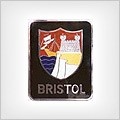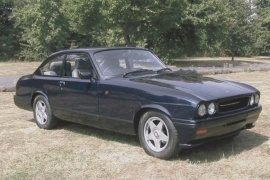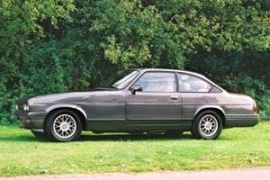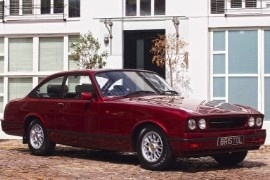
BRISTOL Blenheim
Generations Timeline, Specs and Pictures

The Bristol Blenheim Series 3 was Bristol’s second update on its Blenheim series and mostly featured exterior styling changes.
The car’s most obvious novelty consisted of its new taillight design (no more vertical arrangement), while also receiving a new interior trim and revised gear shifter. The instrument panel was also improved. However, there were no changes in the engine compartment, as the Blenheim 3 featured the same 5.9-liter V8 unit delivering 228 hp and 325 lb-ft of torque. In 2007 it got a power upgrade, consisting of a solid 50 HP, thus cranking 400 HP from the same 5.9-liter V8.

The last series product of the British car-manufacturer Bristol was the 2002 Blenheim.
It was a new improvement over the original 1976 603 model, even if it wasn’t the last model produced by Bristol.
The Bristol history had ups and downs. Its glory days were shared with BMW engines and even BMW shapes. That was after WWII and some vehicles even featured the BMW kidneys on the grille, but not the badge. Over time, the car manufacturer has decided to switch sides and bought the V8 engines from Chrysler.
In 1976, Zagato was employed to draw a new shape for the aged Bristol 411 Coupe. It retained the three-box design and imagined a silhouette of a 4-seats grand tourer. Its greenhouse was tall enough to accommodate comfortably two adult passengers in the rear. The car featured some modifications between 1976 and 2002, but it kept the same basics. Some slight touches here and there were made to make the car more appealing for its customers. The four rounded headlights and the redesigned grille were part of the change. In the rear, the Opel/Vauxhall Senator horizontally mounted taillights were new.
Inside, there were the same exclusive British materials. The 2002 model featured the same complicated dashboard design, inspired by the WWII aircrafts. The wood trims and the round air-vents were in total disharmony with the Radio-CD mounted on top of the center console, like it was a cheap replacement for the original equipment.
Under the hood, there was the same 5.9-liter V8 unit from Chrysler but upgraded to deliver 350 hp. It was mated to a standard 4-speed automatic transmission.

As a response to Aston Martin’s DB AR1 (previously launched by their British rivals), Bristol announced the introduction of a new fast luxury roadster, the Blenheim Speedster.
Borrowing Blenheim Speedster prototype’s classic design and based on the modern 2-door Blenheim, the new model was allegedly clocked within 5 seconds on the 0-60 mph sprint and topped around 160 mph. Originally assembled to commemorate the company’s 1950 prototype, the Blenheim Speedster was only produced in about 15 units and benefited from a 5.9L V8 engine delivering up to 390 lb-ft of torque.

Bristol first updated its Blenheim range in 1998, with the introduction of a revised Blenheim Series II.
The new model featured the same 5.9L V8 engine, same front end design (with inboard-mounted headlights and rectangular-hinge bonnet) and same interior trim, the only revisions being operated on car’s transmission and fuel consumption level. Therefore, the Britsol Blenheim range now benefited for the first time in company’s history from a 4-speed automatic gearbox, while also featuring a significant reduced level of fuel consumption. This model was further revised a year later.

The brand new Blenheim was introduced by Bristol in 1994.
Aimed to replace the old Brigand and Britannia models, this new luxury coupe (also plated as 603S3) featured a redesigned front grille - lower than the 410 or 411S3 models - while based on Bristol’s old-school chassis construction. The car’s bodywork was completely hand-built and benefited from the same Chrysler 5.9-liter V8 unit that could now run on either petrol or LPG. This model was discontinued in 1997 and replaced by a new update - the Blenheim 2 - featuring an aluminum lightweight coachwork, new suspension and revised hood.























































